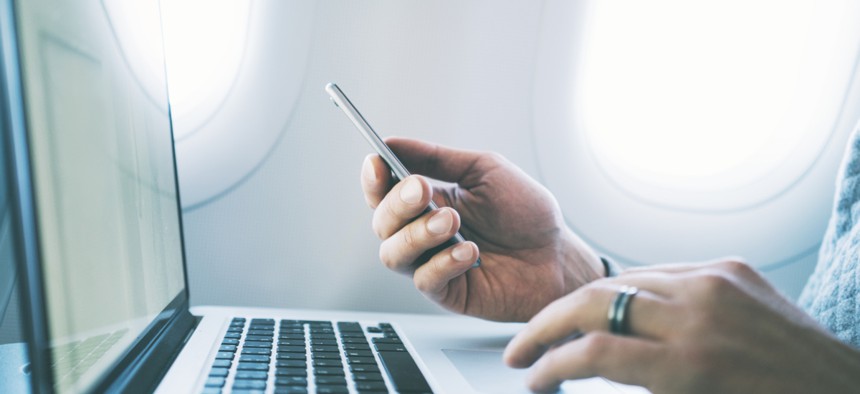Free In-Flight Wi-Fi Means We’re Quickly Losing an Unexpected Haven for Deep Productivity

ImYanis/Shutterstock.com
By 2035, in-flight wifi is expected to be ubiquitous, with the potential of $30 billion in added revenue for airlines.
Flights, with their stagnant air, cramped seats, turbulence, annoying seat partners and crying children, may not seem like havens of deep productivity—and yet for many people they are.
Even if everyone isn’t at the level of PR guy Peter Shankman, who claimed last year to have written nearly 30,000 words on a single business-class flight, many passengers speak of flying time as a chance to catch up on work or intensive reading, safe in the knowledge they can’t reach anyone and no one expects to reach them.
Which is why the relentless expansion of wi-fi availability in flight is such a shame.
Airlines have been offering high-speed internet access for a fee for a while, of course. In the US, via Gogo, it’s about $19 for a 24-hour pass or $50 a month (daily access is cheaper on some domestic airlines). In January, JetBlue began offering free high-speed inflight wifi. Now Delta Air Lines, the world’s second largest carrier, says that starting Oct. 1, it will allow passengers complimentary use of wifi for iMessage, WhatsApp and Facebook Messenger. The free wifi will allow texting but won’t allow image and video transfers. Eventually, though, high-speed wifi is going to be the norm—and the expectation that it’s fine to be out of contact once you send a text that says “boarded” will crumble.
Delta says it has improved wifi on 200 aircraft and plans to have high-speed service on 600 of its more than 800 planes in two years. By 2035, in-flight wifi is expected to be ubiquitous, with the potential of $30 billion in added revenue for airlines.
Why is it that flights often make for good working conditions? In spite of all the discomfort, there’s something zen-like and cloistered about being in an aircraft and incommunicado. Particularly when lights dim and people are sleeping or absorbed in their movies with headphones on, it’s easy to get in a zone with the material you’re looking at, on a laptop or from a printout.
“Writing is something I’ve always loved to do, but being ADHD, it’s difficult to find ways to do it that allow me to enter my zone of focus, without being constantly interrupted by something shiny, the Internet, a text, or a cat,” Shankman writes on his blog. “Then, about nineteen years ago, I discovered business travel.” On a long-haul flight, he says his strategy is to take a nap for the the first half hour or so, which allows him to wake up refreshed. He then writes for most of the rest of the trip, skipping meals but taking breaks for exercise every 3,000 words or so: “Next thing I know, I’m usually being told to put the laptop away, as we’re on final approach. I land halfway around the world, and I have several new chapters of content, done and ready to be copy-edited.”
Other people say they like using flights strategically, as a time to reflect on aspects of their work because it’s a place to be “left alone with your thoughts.” And they’re also good for reading a book cover to cover, rather than falling asleep to fragments of a book night after night and then eventually abandoning it.
Internet on planes has been around for a while—some 25% of flights have wifi now. And lots of people have the discipline to turn it off, or use blocking software. However for most of us, if we know it’s there, we’ll use it. And when the connection isn’t as fast as promised, we’re not likely to put it away and do something else—instead, we’ll likely just stare blearily at our devices hoping they’ll load at some point over the next few hours.


